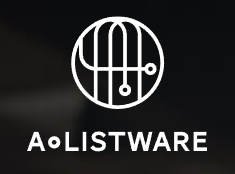Backend in Europe is past buzzwords. It is the product’s backbone: data, interfaces, queues, observability. Use microservices when it helps, a tidy monolith when it is cleaner. Not flash, but predictability under load. This article highlights companies that work this way: API and data first, CI and tests close by, integrations wrapped behind clear adapters.
The outlook is practical: teams want systems that last, accept new features, and do not shock client apps. Next steps are steady rather than flashy: stable contracts, event backbones, safe migrations, metrics that matter. Vendor choice is critical: check versioning discipline, schema design, and how the team handles failure. Here we review leading Europe based backend development companies without ranking or hype, just practice.

1. A-Listware
We design and build the server side of products with a steady, practical rhythm. Work starts by mapping how the business actually runs, not how a diagram wishes it did. From that map we draw service boundaries, name the interfaces, and shape data models that read cleanly a year later. We provide backend development in Europe and support customers in Europe across platforms that need predictable behavior under growth. When traffic patterns shift, we adjust caching rules, queue depths, and pool sizes rather than rewriting everything. Small loops help – short tasks, quick reviews, fewer surprises, and releases that feel like steps, not leaps.
Under the hood, we prefer contracts that are written down and versioned, so client teams are not guessing. Heavy work moves to background jobs and scheduled workers, which keeps user flows fast. We lean on message queues to smooth spikes, idempotent handlers to avoid double work, and backoff rules to keep noisy neighbors from causing a storm. Data is treated with care – schemas evolve behind feature flags, migrations are rehearsed, and queries are profiled before the peak. Monitoring is part of delivery, not an afterthought, so logs, metrics, and traces tell a single story when something bends.
Security and compliance live inside the pipeline. Roles follow least privilege, tokens expire, audit trails are explicit. We document acceptance criteria in plain language next to tests, which makes change safer and handoffs calmer. Deployments use automation, blue green or canary where it makes sense, and rollback plans that are boring by design. Integrations sit behind adapters with clear timeouts and retries, so external quirks do not leak into core logic. The goal is simple enough – server side foundations that stay quiet while features move.
Key Highlights:
- API contracts that balance stability with incremental change
- Domain first data modeling with safe schema evolution
- Resilience patterns applied early with retries, idempotency, and backoff rules
- Operational visibility through logs, metrics, and traces aligned to real failure modes
Services:
- Backend architecture and modular service design
- REST and GraphQL API development with versioning strategy
- Event driven workflows using queues, workers, and schedulers
- Database design, indexing, and performance tuning
- Authentication, authorization, and audit logging for regulated scenarios
- Continuous integration, automated testing, and deployment automation
Contact Information:
- Website: a-listware.com
- Email: info@a-listware.com
- Facebook: www.facebook.com/alistware
- LinkedIn: www.linkedin.com/company/a-listware
- Address: St. Leonards-On-Sea, TN37 7TA, UK
- Phone Number: +44 (0)142 439 01 40

2. Sigma Software
Sigma Software approaches backend work as a set of moving parts that must fit cleanly. Service mixes range from API design and data processing to integrations that keep traffic flowing under load. Microservices where it helps, monoliths where it’s simpler. Tooling is pragmatic, with attention to observability and automated tests so changes don’t surprise anyone. E-commerce, content platforms, and custom portals benefit from the same habit – stable interfaces first, then polish on top. The result is infrastructure that can be extended without tearing up what already runs.
Standout qualities:
- Attention to API discipline and versioning
- Clear handoff between backend services and frontend clients
- Mature CI pipelines with tests tied to real scenarios
- Integration experience with common payment, CRM, and analytics stacks
Core offerings:
- Backend architecture and service design
- REST and GraphQL API development
- Event-driven workflows and message queues
- Database modeling, migrations, and performance tuning
- E-commerce engines and platform integrations
Contact Information:
- Website: sigma.software
- E-mail: info@sigma.software
- Facebook: www.facebook.com/SIGMASOFTWAREGROUP
- Twitter: x.com/sigmaswgroup
- LinkedIn: www.linkedin.com/company/sigma-software-group
- Instagram: www.instagram.com/sigma_software
- Address: Hornsgatan 1, Stockholm 118 46, Sweden
- Phone: +46 70 600 42 49

3. ELEKS
ELEKS treats server-side work as the backbone of product health. Projects begin with the data shape, then move into service boundaries and runtime choices that fit the load pattern. Teams handle both greenfield builds and refactors of aging systems, keeping latency predictable while new features ship. The approach favors readable interfaces, clear contracts, and progressive hardening of security as scope grows.
Key points:
- Service boundaries planned around real workflows
- Consistency between data models, caching, and query paths
- Security and role design baked into early iterations
Their services include:
- Custom application backends for web and mobile
- Database design, indexing, and query optimization
- API development and lifecycle management
- Authentication, authorization, and audit trails
- Scalability work with caching, queues, and background jobs
- Maintenance, refactoring, and migration of legacy code
Contact Information:
- Website: eleks.com
- Email: contact@eleks.com
- Facebook: www.facebook.com/ELEKS.Software
- Twitter: x.com/ELEKSSoftware
- LinkedIn: www.linkedin.com/company/eleks
- Address: Moor Place, 1 Fore Street Avenue, London, United Kingdom, EC2Y 9DT
- Phone: +44-20-4583-0843

4. One Beyond
One Beyond builds server-side systems that are meant to live for a while. The team leans on established patterns, then adds automation so releases don’t stall. Web applications and internal tools get backends that are straightforward to reason about, with predictable behavior under traffic. It isn’t flashy work, and that’s the point. Reliability first, then speed.
A second thread shows up in project cadence. Discovery trims scope, interfaces are agreed early, and tests track acceptance criteria instead of vague wishes. As features land, deployment becomes routine, not a cliff. The overall feel is methodical – short loops, honest feedback, fewer surprises.
Finally, integrations get careful treatment. External services are wrapped behind clean adapters, error handling is explicit, and monitoring is part of the build. That keeps the surface area small even when a product touches many systems.
Why people choose this vendor:
- Emphasis on sustainable code and explicit interfaces
- Strong focus on testable requirements and acceptance criteria
- Track record with complex web apps that evolve over time
What they offer:
- Design and implementation of web app backends
- API development for internal and external consumers
- Data layer design with migrations and performance care
- Integration of third-party services with resilient adapters
- DevOps support for build, release, and runtime monitoring
- Refactoring and modernization of existing server-side code
Contact Information:
- Website: one-beyond.com
- Email: contact@one-beyond.com
- Facebook: www.facebook.com/OneBeyondSoftware
- Twitter: x.com/OneBeyond_
- LinkedIn: www.linkedin.com/company/onebeyond
- Address: 33 Glasshouse Street, London, W1B 5DG
- Phone: 020 3096 6199

5. Andersen
Andersen approaches backend work as a practical craft that keeps products steady while features move. The focus sits on service boundaries, clean contracts, and data flows that stay readable months later. Projects range from transactional systems to content platforms, with runtime choices matched to traffic shape and latency needs. Testing is wired into the pipeline, so regressions surface early and deployments feel routine. Integrations are wrapped behind explicit adapters, which keeps external dependencies from leaking into core logic. Quiet reliability first, then speed where it matters.
What makes them stand out:
- API design that favors stable contracts and versioning
- Attention to data modeling with migrations planned as part of delivery
- Clear separation between domain logic and integration layers
Services cover:
- Custom backend architecture and service layout
- REST and GraphQL API development with lifecycle care
- Event pipelines with queues, schedulers, and background jobs
- Database tuning, indexing strategies, and schema evolution
- Authentication, authorization, and audit trails for regulated use cases
- CI setup with automated testing and deployment routines
Contact Information:
- Website: andersenlab.com
- E-mail: vn@andersenlab.com
- Facebook: www.facebook.com/AndersenSoftwareDev
- Twitter: x.com/AndersenLabs
- LinkedIn: www.linkedin.com/company/andersen-softwaredev
- Instagram: www.instagram.com/andersen.global
- Address: Rosa-Bavarese-Straße 3, 80639 Munich, Germany
- Phone: +49 22 198 253 169

6. CoreBlue
CoreBlue builds server-side systems with a measured approach that starts from the data shape and ends with predictable operations. API boundaries are agreed early, caching rules are explicit, and the error path is treated as a first-class scenario. That combination suits products that need calm releases and traceable behavior under load. The result is less surprise and more routine work, which is exactly what long-lived platforms prefer.
The team’s work often blends new services with existing estates. Legacy code is refactored in steps, while new components arrive behind well-documented interfaces. Monitoring is part of the build, not an afterthought, so incidents read like checklists rather than puzzles. Small loops, honest feedback, fewer fire drills.
Key points:
- Service boundaries aligned to real workflows
- Data consistency handled through migrations, versioned schemas, and tests
- Security and roles designed early to avoid patchwork privileges
- Operational metrics, tracing, and alerting tuned for actionable signals
Their focus areas:
- Design and build of application backends for web and mobile
- API development for internal and external consumers
- Data layer design, performance tuning, and resilient caching
- Integration of third-party systems with robust adapters
- Refactoring and modernization of existing services
- Deployment automation and runtime maintenance
Contact Information:
- Website: coreblue.com
- Email: team@coreblue.com
- LinkedIn: www.linkedin.com/company/coreblue
- Address: The Apex, Derriford Business Park, Brest Rd, Plymouth PL6 5FL
- Phone: +(44) 0330 118 0338

7. Appinventiv
Appinventiv handles backend development as the foundation for product cadence. Architecture choices are made with traffic and growth in mind, not fashion. Interfaces are written down, acceptance criteria live next to tests, and the release path is kept short. That rhythm is helpful when a product expands quickly yet cannot afford brittle internals.
A common pattern is modular services that talk through stable contracts. Message queues, schedulers, and background jobs carry longer tasks away from user flows, which keeps latency steady. Data work is deliberate – models remain readable, migrations are rehearsed, and queries get profiled before traffic spikes. The payoff is smoother feature rollouts and simpler debugging.
Attention also goes to integration edges. Payment gateways, identity providers, and analytics tools are wrapped behind clean abstractions, with failure paths specified up front. Observability is woven into the codebase, so logs and traces tell a coherent story. Nothing fancy for the sake of it. Just parts that fit and keep working.
Why they’re worth a look:
- API contracts treated as shared documents across teams
- Consistent use of background processing to protect user-facing latency
- Structured approach to data modeling and migration safety
What they offer:
- Backend architecture and service decomposition
- REST and GraphQL API buildout with versioning strategy
- Event-driven flows using queues, workers, and schedulers
- Database design, indexing, and query optimization
- Security layers with auth, permissions, and audit logging
- CI pipelines, automated tests, and deployment orchestration
Contact Information:
- Website: appinventiv.com
- Twitter: x.com/appinventiv
- LinkedIn: www.linkedin.com/company/appinventiv
- Instagram: www.instagram.com/appinventiv
- Address: 3rd Floor, 86-90 Paul Street, EC2A 4NE London, UK
- Phone: + 44 – 753 – 900 – 0641

8. STX Next
STX Next treats backend development as the stable center of a product. Interfaces come first, code follows, and deployments stay repeatable. Work spans service decomposition, data modeling, and API lifecycles that don’t surprise downstream teams. Tooling is pragmatic – tests, pipelines, and observability wired in from the start. Integrations are wrapped behind adapters so external systems don’t leak into core logic. Reliability first, then speed where it matters.
What makes them stand out:
- API versioning treated as a contract across teams
- Data models shaped to support both reads and writes without contortions
- Resilience patterns used early – retries, idempotency, circuit breakers
Core offerings:
- Backend architecture and service layout
- REST and GraphQL API buildout
- Event pipelines with queues, workers, and schedulers
- Database design, migrations, and performance tuning
- Identity, permissions, and audit logging
- CI pipelines, automated tests, and deployment routines
Contact Information:
- Website: www.stxnext.com
- E-mail: business@stxnext.com
- Facebook: www.facebook.com/StxNext
- LinkedIn: www.linkedin.com/company/stx-next-ai-solutions
- Instagram: www.instagram.com/stx_next
- Address: 77 Farringdon Road EC1M 3JU, United Kingdom

9. Codal
Codal builds server-side systems with careful boundaries and plain interfaces. Discovery trims scope, then services are mapped to real workflows so latency stays predictable. Background jobs carry heavier tasks away from user paths, which keeps pages snappy even under load. Monitoring is part of the plan, not an afterthought, so incidents read like checklists, not mysteries.
Modernization shows up as a steady habit. Legacy code is eased forward with migrations that can be rolled back, while new components arrive behind clean adapters. Acceptance criteria live next to tests, which helps releases land without drama. The result is calm delivery and fewer regressions.
Key points:
- Service boundaries aligned to use cases rather than technology fads
- Caching and consistency rules written down, tested, and enforced
- Security and role design considered early to avoid patchwork fixes
- Operational playbook with actionable alerts instead of noisy dashboards
What they offer:
- Design and implementation of application backends
- Public and internal API development with lifecycle care
- Data layer design, indexing, and query optimization
- Integration of third-party services through resilient adapters
- Refactoring and staged migration of existing systems
- Build, release, and runtime support with automation
Contact Information:
- Website: codal.com
- Email: go@codal.com
- Facebook: www.facebook.com/gocodal
- LinkedIn: www.linkedin.com/company/gocodal
- Instagram: www.instagram.com/gocodal
- Address: Mosaic Digital Hub, 13-14 Silver Street, Lincoln, LN2 1DY, United Kingdom
- Phone: +44 1522 213899

10. WaveAccess UK
WaveAccess UK approaches backend work as a long game. Architecture choices favor readability, small units of change, and interfaces that stay stable as features grow. That shows up in how projects are planned – short loops, tight feedback, and deployments that can be repeated on a dull Tuesday. Nothing flashy for its own sake. Just parts that fit.
Data work gets particular attention. Models are organized around domain language, migrations are rehearsed, and queries are profiled before traffic spikes. Event flows pick up the slack where synchronous calls would struggle, so user-facing paths remain steady. Integrations sit behind adapters with explicit error handling and backoff rules.
Operations are kept honest. Logs and traces tell a coherent story, alerts point to a cause rather than a guess, and runbooks are updated when reality changes. That makes on-call quieter and debugging faster. Useful habits, not heroics.
Why they’re worth a look:
- Stable API contracts that reduce churn across client teams
- Deliberate use of queues and schedulers to smooth traffic and latency
- Consistent guardrails for security, from auth to audit trails
Their focus areas:
- Backend architecture and modular service design
- API development for external and internal consumers
- Event-driven workflows and background processing
- Database modeling, tuning, and safe schema evolution
- Integration engineering for payments, identity, and analytics
- Continuous testing, CI, and deployment automation
Contact Information:
- Website: www.wave-access.uk
- Email: john.brightwell@wave-access.com
- Facebook: www.facebook.com/WaveAccessCompany
- Twitter: x.com/wave_access
- LinkedIn: www.linkedin.com/companies/waveaccess
- Instagram: www.instagram.com/wave_access
- Address: Gravesend Road, Dingley Dell, Rochester, ME3 7DN
- Phone: +44 7770 395633

11. Boldare
Boldare treats backend work as the engine room of a product, built to run quietly while everything else changes around it. Interfaces are designed first, with service boundaries mapped to real workflows so code stays readable months later. Event flows pick up heavy tasks, queues absorb spikes, and user paths remain quick. Data modeling is practical – schemas evolve safely, queries get profiled, and migrations are rehearsed rather than improvised. Monitoring is part of delivery, which means issues surface early and are solved with less drama.
Standout qualities:
- API contracts written for stability and incremental change
- Service decomposition guided by domain language, not fashion
- Resilience patterns applied early – retries, idempotency, circuit breakers
Core offerings:
- Backend architecture and modular service design
- REST and GraphQL API development with versioning strategy
- Event-driven processing with queues, schedulers, and workers
- Database design, migrations, and performance tuning
- Access control, permissions, and audit logging
- Continuous testing, CI, and automated deployments
Contact Information:
- Website: www.boldare.com
- E-mail: hello@boldare.com
- Facebook: www.facebook.com/boldarecom
- Twitter: x.com/boldarecom
- LinkedIn: www.linkedin.com/company/boldarecom
- Instagram: www.instagram.com/boldarecom
- Address: Zwycięstwa 52, 44-100 Gliwice, Poland

12. GoodCore
GoodCore builds server-side systems with calm, methodical steps. Discovery shapes the data picture first, then services are drawn around it so latency and throughput stay predictable. Integrations sit behind adapters, which keeps external quirks from polluting domain logic. Tests live next to acceptance criteria, and that habit makes releases feel routine rather than risky.
Modernization is handled in measured phases. Legacy code moves forward through safe migrations, feature flags, and rollback plans. Background jobs take the weight off request flows, so user interactions remain steady under load. Operations are documented as playbooks, which shortens recovery time and reduces noise.
Key points:
- Service boundaries aligned to concrete use cases
- Caching and consistency rules captured as code and tests
- Security designed upfront with roles and least-privilege access
- Operational metrics and alerts tuned for actionable signals
What they offer:
- Design and implementation of application backends
- Public and internal API development across teams
- Data layer design, indexing, and query optimization
- Integration of third-party systems through resilient adapters
- Refactoring and staged migration of existing services
- Build, release, and runtime support with automation
Contact Information:
- Website: www.goodcore.co.uk
- Email: contact@goodcore.co.uk
- Facebook: www.facebook.com/goodcoresoftware
- LinkedIn: www.linkedin.com/company/goodcore-software
- Address: Airport House, Purley Way, Croydon CR0 0XZ
- Phone: 020 8781 6903

13. Square Root
Square Root approaches backend development as the steady backbone for products that keep evolving. Architecture choices favor clarity over novelty, with interfaces agreed early and documented in plain terms. The result is code that is easier to reason about, even as features stack up. Small loops help – short tasks, quick checks, fewer surprises.
Data work receives extra care. Models use domain words, not vague labels, and migrations are choreographed so changes land safely. Where synchronous calls would strain, event processing takes over and smooths the load. That mix keeps response times predictable and errors easier to trace.
Integrations are handled with deliberate wrappers. Payment, identity, or analytics providers connect through adapters with explicit timeouts and backoff rules. Monitoring is part of the build, not an afterthought. Logs tell a story, traces show the path, and alerts point to causes instead of guesswork.
Why people choose them:
- Stable API contracts that reduce churn for client teams
- Measured use of queues and schedulers to protect user-facing latency
- Consistent guardrails for security and auditability
Service scope:
- Backend architecture and modular service layout
- API design and implementation for internal and external consumers
- Event-driven workflows, schedulers, and background workers
- Database modeling, tuning, and safe schema evolution
- Integration engineering for payments, identity, and analytics
- Continuous testing, CI pipelines, and automated deployment routines
Contact Information:
- Website: square-root.co.uk
- Email: info@square-root.co.uk
- Facebook: www.facebook.com/squareroot.ie
- Twitter: x.com/squareroot_ie
- LinkedIn: www.linkedin.com/company/square-root-solutions
- Address: 55 Lordship Rd, London N16 0QJ, United Kingdom
- Phone: +44 2034 688802

14. Intellias
Intellias approaches backend development as the quiet spine of a product, the piece that must stay dependable while everything around it moves. Interfaces are mapped early, contracts written down in simple terms, and data flows shaped to keep reads fast without starving writes. Event processing handles the heavy lifting, while request paths stay tidy and predictable. Integrations sit behind adapters with explicit timeouts and retries, which keeps external quirks from leaking into core logic. Testing, observability, and deployment routines are treated as part of the build, not an afterthought, so releases feel routine rather than dramatic.
Standout qualities:
- Stable API contracts with clear versioning and deprecation paths
- Domain first data modeling with safe schema evolution
- Resilience patterns used from day one – idempotency, retries, circuit breakers
- Operational visibility built around actionable logs, metrics, and traces
Core offerings:
- Backend architecture and modular service design
- REST and GraphQL API buildout with lifecycle care
- Event driven workflows with queues, workers, and schedulers
- Database design, migrations, and performance tuning
- Security layers with authentication, permissions, and audit logging
- CI pipelines, automated tests, and deployment automation
Contact Information:
- Website: intellias.com
- E-mail: info@intellias.com
- Facebook: www.facebook.com/Intellias.GlobalPage
- LinkedIn: www.linkedin.com/company/intellias
- Instagram: www.instagram.com/intellias_global
- Address: Wilhelm-Wagenfeld-Str. 28, 80807, 4th floor, Munich, Germany
- Phone: +49 8001800992

15. EL Passion
EL Passion treats server side work as craft rather than ceremony. Service boundaries are drawn around real user journeys, which keeps latency honest and code readable months later. Background jobs and schedulers offload expensive tasks so interfaces remain responsive. Monitoring is wired in from the start, making incidents shorter and analysis less guessy.
Data gets careful attention. Models use domain language, migrations are rehearsed, and queries are profiled before traffic climbs. Integrations are wrapped behind clean abstractions with explicit error handling and backoff rules. The result is calm delivery and fewer last minute surprises.
Why people like them:
- API discipline that reduces churn for client teams
- Measured use of caching and queues to smooth spikes
- Security and roles planned early to avoid patchwork fixes
Service scope:
- Design and implementation of application backends
- Public and internal API development with versioning strategy
- Event pipelines, background workers, and scheduled tasks
- Data layer design, indexing, and query optimization
- Integration engineering for payments, identity, and analytics
- Continuous testing, CI pipelines, and release automation
Contact Information:
- Website: www.elpassion.com
- E-mail: hello@elpassion.com
- Facebook: www.facebook.com/elpassion
- Twitter: x.com/elpassion
- LinkedIn: www.linkedin.com/company/el-passion
- Instagram: www.instagram.com/elpassion
- Address: Plac Europejski 1, 00-844 Warsaw, Poland
- Phone: +48 792 541 588
Conclusion
A solid backend is quiet by design, and painful when missing. As products scale, the winning setup is stable contracts, reversible migrations, and signals that guide, not distract. The service outlook is clear: more event driven flows, fewer manual steps, release automation, and quality gates throughout. Picking a partner matters: look for teams that design APIs carefully, evolve database schemas safely, treat testing as part of delivery, and explain outages in plain language.
This article covered strong backend development companies operating across Europe. Stacks differ, principles align: readable interfaces, transparent process, and observability that earns its keep. Use this as a checklist, map it to your risks and release pace, and your infrastructure will stay a support beam rather than a bottleneck.


